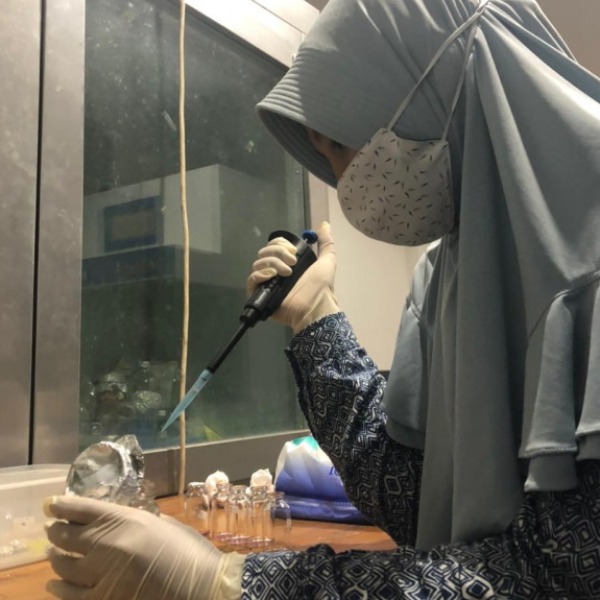How does the vaccine work and how to develop vaccines?#Everyone is a Writer
Vaccine Can Prevent The Organisms from The Virus Infection
How does the vaccine work?
Antiviral vaccines work by inducing specific antibodies for the surface glycoprotein of a hidden virus or capsid protein from an uncovered virus. The antibody response works best when it neutralizes and inhibits infection. Neutralization can occur in three main mechanisms. First, virus aggregation or immobilization reduces the infectious inoculum by preventing the virus from reaching the target cell. The second mechanism involves antibodies that directly block the attachment of the virus to the target cell by covering the receptor-binding domain. Third, neutralization can occur post-attachment by preventing entry or release through inhibition of fusion[1].
How to develop vaccines?
Vaccine development is carried out with new antigen or immunogen uptake stages identified in the research process and then developed into vaccines that can be evaluated through preclinical and clinical studies to determine the safety and efficacy of the resulting vaccine[2]. Based on the part of the antigen, the development of vaccines can be divided into 3, including peptide vaccines, DNA vaccines, and RNA vaccines. The following is a flow chart of each type:
1. Peptide vaccine (summarized from the journal Kalita et al., 2020)[3]
2. DNA Vaccines (summarized from the journal Hu et al., 2009)[4]
3. RNA vaccine (summarized from the Sharmin and Islamic journals, 2014)[5]
Developing vaccines for viral pathogens have a relative level of investment needed for successive vaccine development stages[6].
Are there any bottlenecks to develop vaccines?
There are several obstacles in vaccine development, including 1) inadequate preclinical data and the lack of detailed information about the correlation of immune protection contributing to product failure in clinical trials; 2) lack of information about infection exposure at the intended vaccine recipient; vaccines must be used in populations with less responsive immune systems; 3) antigenic variations require continuous updating of vaccine formulations; 4) high vaccine development costs result in the abandonment of products that are useful prematurely; inadequate access to vaccines in poor countries, especially those used to fight tropical diseases; and 6) development of more relevant animal models; more human samples to collect and analyze; increased use of experimental human challenge infections. The steps that can be taken to overcome these obstacles among them, are 1) more human samples to be collected and analyzed; 2) get a greater understanding of the mechanism of action from the helpers currently in use; the development of special vaccine delivery systems for use in immunocompromised populations; 3) look for preserved antigens; monitor the genetic variation of infectious organisms in the community; 4) more investment in vaccine research; 5) a tiered pricing strategy; 6) facilitating vaccine development in developing countries[7].
References:
- Graham, B. S. (2013). Advances in antiviral vaccine development. Immunological Reviews, 255(1), 230-242.
- Douglas, R. G., & Samant, V. B. (2018). The vaccine industry. Plotkin's Vaccines, 41.
- Kalita, P., Padhi, A. K., Zhang, K. Y., & Tripathi, T. (2020). Design of a Peptide-Based Subunit Vaccine against Novel Coronavirus SARS-CoV-2.
- Hu, H., Tao, L., Wang, Y., Chen, L., Yang, J., & Wang, H. (2009). Enhancing immune responses against SARS-CoV nucleocapsid DNA vaccine by co-inoculating interleukin-2 expressing vector in mice. Biotechnology Letters, 31(11), 1685.
- Sharmin, R., & Islam, A. B. M. M. K. (2014). A highly conserved WDYPKCDRA epitope in the RNA directed RNA polymerase of human coronaviruses can be used as epitope-based universal vaccine design. BMC bioinformatics, 15(1), 161
- Graham, B. S., Ledgerwood, J. E., & Nabel, G. J. (2009). Vaccine development in the twenty‐first century: changing paradigms for elusive viruses. Clinical Pharmacology & Therapeutics, 86(3), 234-236.
- Oyston, P., & Robinson, K. (2012). The current challenges for vaccine development. Journal of medical microbiology, 61(7), 889-894.
About Us · User Accounts and Benefits · Privacy Policy · Management Center · FAQs
© 2025 MolecularCloud





Nice Information !!